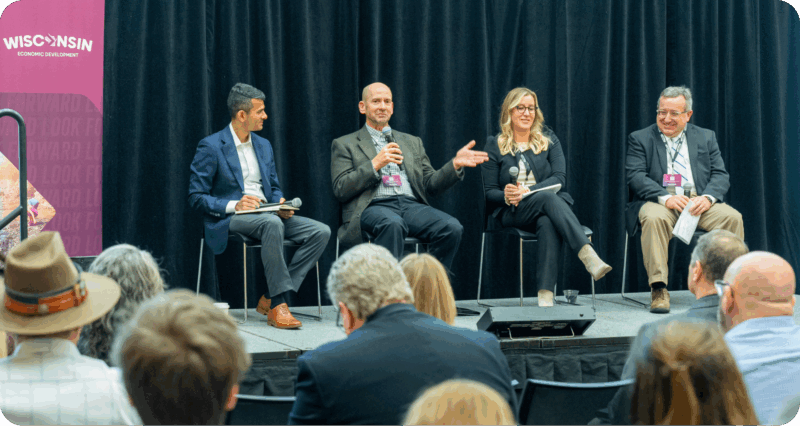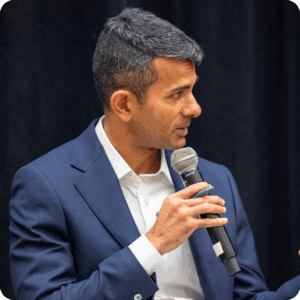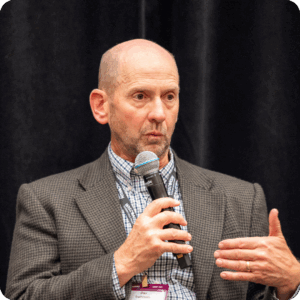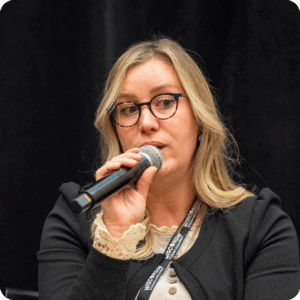
Panelists from organizations across Wisconsin gathered at the Wisconsin Economic Summit to discuss building a workforce for the future.
As demographic trends including an aging population constrain the availability of capable workers, Wisconsin employers are applying creative strategies to attract and retain the workers they need now and for the future.
“We are facing a drumbeat of retirements,” Sachin Shivaram, CEO of Wisconsin Aluminum Foundry in Manitowoc and co-chair of New North Inc., the regional economic development organization for Northeast Wisconsin, said in a panel discussion devoted to workforce issues at the 2025 Wisconsin Economic Summit held in mid-October.
Shivaram was joined on the panel by Dan Truttmann, co-owner of Truttmann Dairy LLC near New Glarus; Sabrina Zerhouni, human resources and engagement leader at JBS Foods in Green Bay; and Joshua VanLieshout, Sturgeon Bay city administrator.
Shivaram noted that along with those retirements, employers are losing decades of experience longtime workers take with them when they leave. “We’re attracting a different sort of person to our workforce, often with no manufacturing experience” or other technical aptitude, Shivaram said, at the same time that the industry is evolving to use more automation, which also increases the training workers need.

Sachin Shivaram, CEO of Wisconsin Aluminum Foundry Inc., at the 2025 Wisconsin Economic Summit.
Shifting demographics
Women, who were absent on the production floor five or six years ago, now make up 20% of his company’s workforce, Shivaram said. Two-thirds of new hires are immigrants—who now make up 22% of employees, compared to less than 3% just a few years ago.
“We’re having to do things that attract people to come to our communities, whether it’s child care or education, housing” and “trying to be a more holistic employer, addressing a person’s whole life as a way to get them to come to our company and stay,” Shivaram said.
On his dairy farm with 500 milking cows, Truttmann employs about a dozen people, more than half of whom are immigrants. With local farms no longer producing a steady supply of “farm kids” who went on to become farm workers, coupled with the opportunities offered by other area employers, Truttmann said, “We really have to rely on the immigrant population.”
Considering company culture

Truttmann Dairy LLC Owner/Farmer Dan Truttmann
Along with competitive wages, Truttmann said, “we just try to provide the environment they would want to come to every day. We do everything that we can to provide a clean, safe, well-functioning environment and provide the company culture that works for them. And it’s as simple as a greeting every time just to make sure that they know we see them, we respect them, we value them. … We just do what we can to be welcoming every day and give them a safe environment to work in, and safe can mean a lot of different things in this day and age.”
With a diverse workforce of 1,400 employees at the JBS meat processing facility in Green Bay, Zerhouni said, “The most important thing is how to retain our team members and give them a sense of belonging” by supporting them both at work and in the community.
A holistic approach to worker satisfaction
“I want to make sure every team member feels supported, heard, and seen. That’s what will make them stay in Wisconsin and help us,” Zerhouni said. The company employs nine interpreters to assist workers with language barriers and has built partnerships with local nonprofits and agencies to help workers and their families in the community with needs such as housing and child care.

JBS Foods Human Resources and Community Engagement Leader Sabrina Zerhouni speaking on the panel
“Housing is a real challenge,” Zerhouni said, especially for people who have language barriers or don’t have a solid credit history. In 2021, JBS donated 26 acres of land on the east side of Green Bay and half a million dollars to the city to build affordable housing, a farm, and a community center. “That made us very, very proud,” Zerhouni said.
Truttmann’s employees have faced similar housing challenges—so, when a home came up for sale across the street from the farm, Truttmann purchased it so employees could live there.
While most people think of Door County as a tourist community, VanLieshout said, “really our backbone is manufacturing.” But finding a place to live was also a challenge for new hires moving to the Sturgeon Bay area.
A countywide housing study was the first tool to convince developers and investors of the demand, leading to several successful housing projects. “The takeaway is there is a role for local government. You can’t have a hands-off approach if you’re going to try to resolve these issues,” VanLieshout said. “And for the city, given that manufacturing pays so much better than tourism, we really need to have these manufacturers in the community.”
